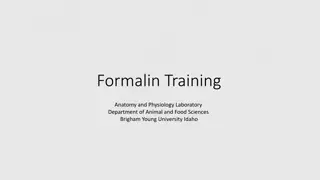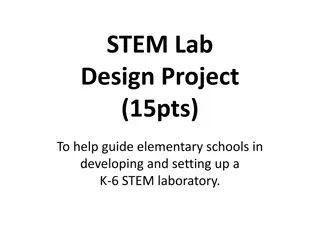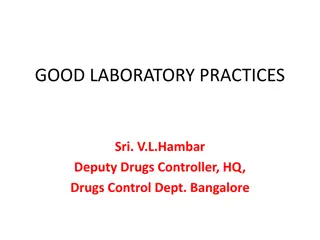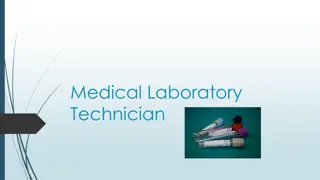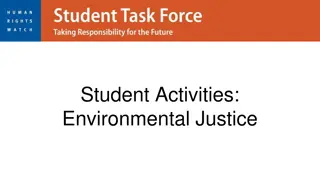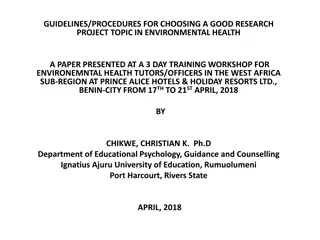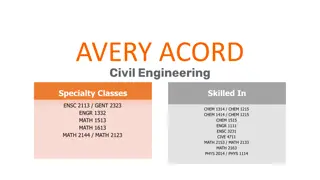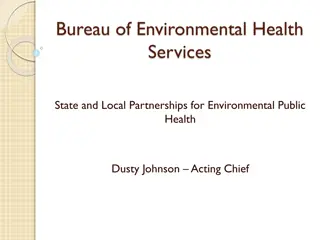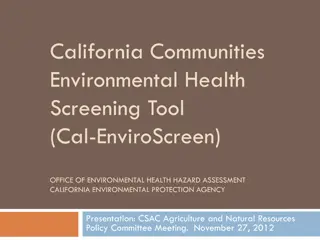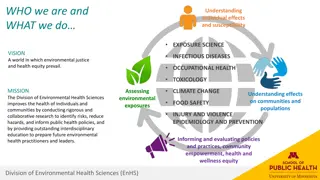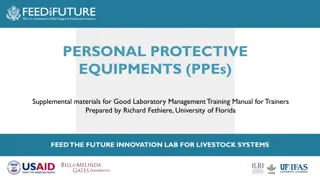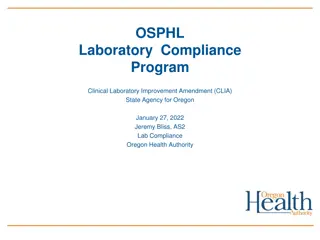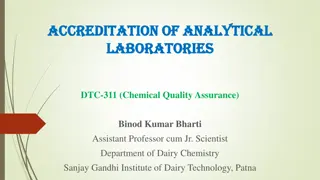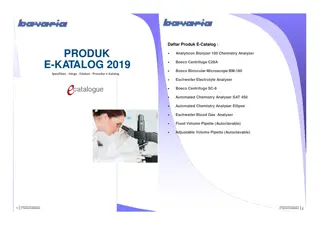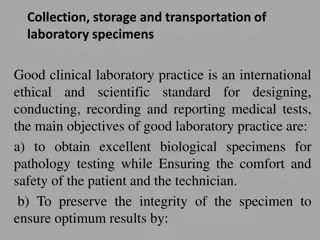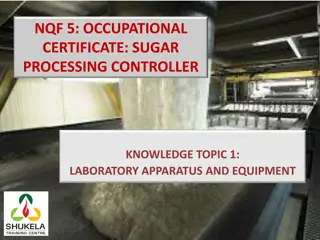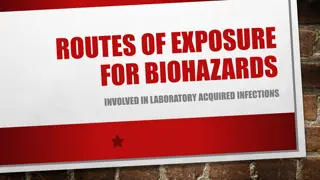Exploring Environmental Engineering - CEE 4530 Laboratory Research Overview
Dive into the world of environmental engineering with CEE 4530 Laboratory Research, covering topics such as temperature probes, acid rain data, and more. Reflect on the course's 25-year history, course goals, and elements like open-ended laboratories and team projects. Get ready for a hands-on learning experience aimed at developing crucial skills in research, data analysis, engineering, and teamwork.
Download Presentation

Please find below an Image/Link to download the presentation.
The content on the website is provided AS IS for your information and personal use only. It may not be sold, licensed, or shared on other websites without obtaining consent from the author. Download presentation by click this link. If you encounter any issues during the download, it is possible that the publisher has removed the file from their server.
E N D
Presentation Transcript
CEE 4530: Laboratory Research in Environmental Engineering Spring 2018 Temperature probe (optional) Monroe Weber-Shirk 265 Hollister Hall mw24@cornell.edu
CEE 4530: Laboratory Research in Environmental Engineering Acid Rain Data source: N.N. Rabalais, Louisiana Universities Marine Consortium, R.E. Turner, Louisiana State University hypoxia Image from: www. environment.nationalgeographic.com environmental contaminants
CEE 4530: Laboratory Research in Environmental Engineering
CEE 4530: Laboratory Research in Environmental Engineering
Agenda for our First Meeting Reflections on 25 years of CEE 4530 Introductions Course overview Working in teams Lab Safety Anaconda, Atom, Hydrogen, Python
Reflections on 25 years 1994 New lab X-Y plotters! Switch to Macintosh computers Custom software for meters/instruments Lots of canned labs Then the evolution Less canned - 50% project Ability to automate experiments Python - Hydrogen
Course Goals To Help Students Develop: An intuition for concepts seen in other classes Laboratory skills Research skills Data analysis Model development Engineering skills Designing systems to meet an objective Troubleshooting and problem solving Writing skills Teamwork skills Practice learning using methods that will work for a lifetime
Course Info Web site Schedule Grades Text: "Laboratory Research in Environmental Engineering: Laboratory Manual" 2018.
Course Elements Laboratories from canned to open-ended Lectures/discussions Prelab questions done individually Laboratory reports done in teams Project done in teams
Projects A chance to develop your engineering skills Learn about process control, automation and application of lots of things that you ve learned thus far! Nutrient Removal Project Research Project
Introductions... My name About me! a hobby, or what I did over break, or what I like to do when I m not doing coursework
Team Preferences? Teams of 3 Fill out form at website by Monday! (link on syllabus page) We will assign you to a team in time for the Acid Rain laboratory
Your To Do list for 4530 Fill out team formation survey by Monday Atom and Python Tutorial (due noon on Wednesday?) Do prelab assignment for Fundamentals Lab AND for laboratory Safety before lab on Wednesday
Cooperative Learning: Teamwork for Engineering Classrooms
Team Management Reflections Think about your most successful/effective team project experience What were the characteristics of the team? What were the conditions? Have you had experiences with teams that were ineffective or frustrating? What made the team ineffective? What could you have done to improve the team?
Types of Teams High-Performing Cooperative members Performance Level team Cooperative Traditional Pseudo Types of Teams
Traditional Classroom Learning Teams Team members: Believe they will be evaluated and rewarded as individuals, not as a team Interact primarily to clarify how assignments are to be done Have no motivation to teach what they know to their teammates May seek a free ride on the efforts of teammates Or may feel exploited and do less
Cooperative Learning Teams Have a goal of maximizing all members learning Hold themselves accountable for doing high quality work Work face-to-face for efficient communication to produce joint work-products Help and encourage each other (academic and personal support) Share responsibility for providing leadership Analyze how effectively they are achieving their goals Emphasize continual improvement of the teamwork process
High-performance Cooperative Learning Team Meets all the expectations of the cooperative learning team Outperforms all reasonable expectations, given its membership High level of commitment Mutual concern for each other s personal growth Achieve high-performance and also have lots of fun
What Makes Cooperative Learning Work? Positive interdependence Face-to-face interaction Individual accountability/personal responsibility Teamwork skills Group processing How are we doing as a team? What could we do better? What challenges are we facing?
Danger signs High achiever paired with procrastinator Procrastinator becomes less and less involved High achiever becomes frustrated Procrastinator learns little and gets a low final grade (team participation rating is a multiplier)
Antidote to Disengagement Engagement! Insist on being a full member of the team Real time collaboration
Course Grading Not on a curve You are not competing with your classmates If you all do well, you will all get good grades Cooperation is rewarded, not penalized
A Few Safety Rules Think through each step before beginning an experiment Identify possible hazards and take appropriate measures to contain or minimize hazards (read labels) If you don t know what is going to happen and think there may be a potential for danger Stop! Get help before proceeding or modify procedure to minimize risk. When using hazardous chemicals use secondary containment and appropriate personal protection
Unattended Experiment Guidelines Prepare for power failure, _______ failure, or a leak __________ containment of hazardous chemicals Prepare for flooded and ____ conditions Do not let equipment such as power stirrers, hot plates, heating mantles, and water condensers run overnight without ________ provisions and the instructor's consent software Secondary dry fail-safe
Unattended Experiment Guidelines Everything well secured Check unattended reactions periodically Post contact information Accurate instructions and _______ for emergency personnel labels
Routes of Chemical Exposure skin protective clothing gloves ingestion don t pipette by mouth! no food in the lab wash before leaving the lab inhalation dust and vapors (use fume hood when either are present) eyes eye protection against splashing and vapors Wash your hands often (with your gloves on)
Safety Data Sheets: an information source Emergency information chemical product and company identification composition hazards identification Appropriate response to hazardous situations first aid measures fire fighting measures accidental release measures http://chemicalsafety.com/sds-search/
Safety Data Sheets: an information source Prevention of hazardous situations handling and storage exposure controls and personal protection physical and chemical properties stability and reactivity Miscellaneous toxicological information ecological information disposal considerations transportation information regulatory information
Safety Data Sheets: an example - Hydrochloric Acid You ve been asked to mix up a solution of 1N HCl from concentrated hydrochloric acid. You would like to know of any hazards associated with this procedure. You remember the safety rule and you think through the steps of preparing the solution. You realize that you ve never opened a container of concentrated HCl before. So you STOP! and get some help.
Hydrochloric Acid: My Solution to the solution Ventilation is required! Solution preparation should be done in a fume hood with gloves, protective clothing, and eye protection
SDS: Summary A good source of information on safe handling May provide useful information on physical- chemical properties Provide first aid, fire fighting, and accidental release measures Can be used to obtain concentrations of ingredients in proprietary solutions












